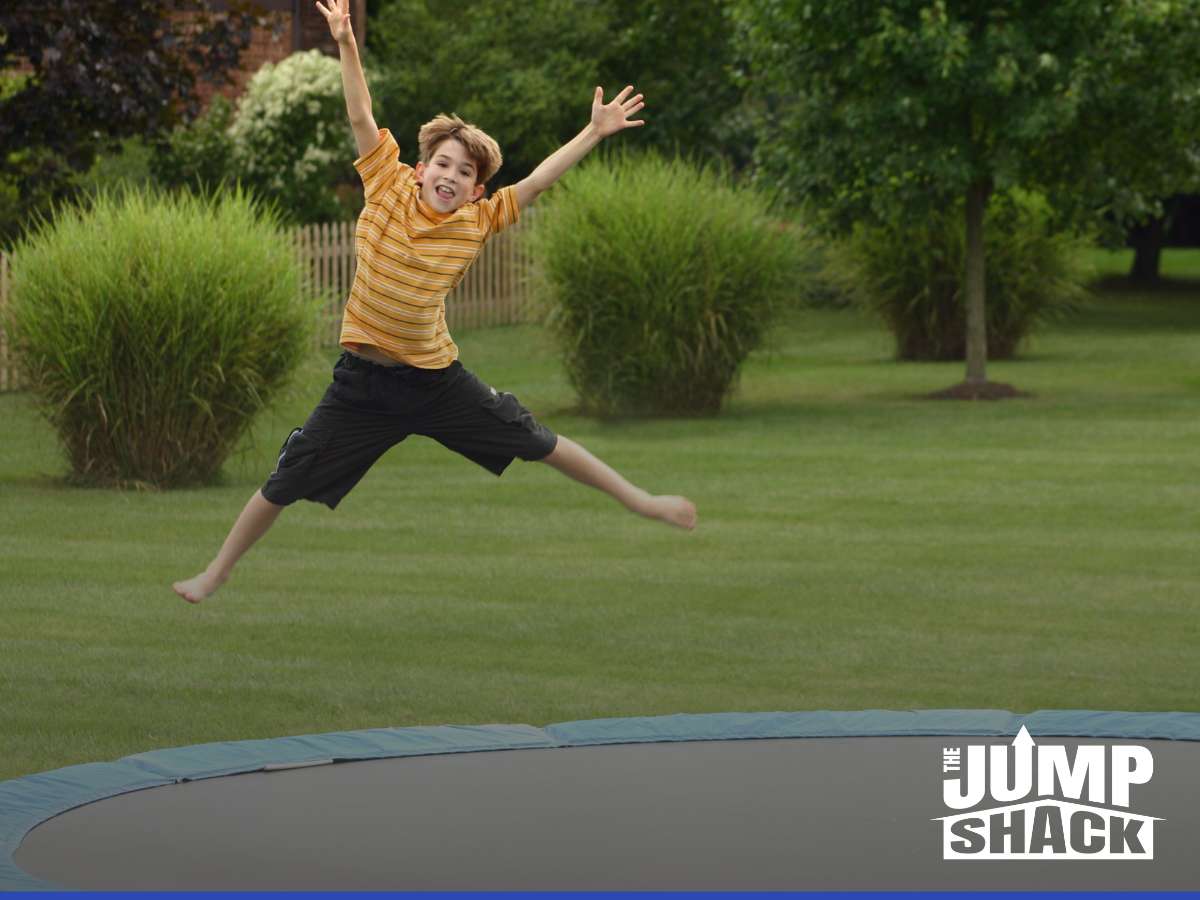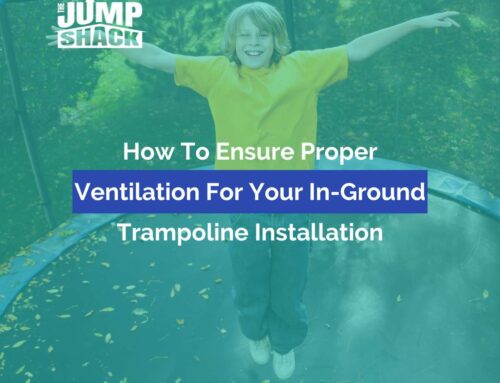Transform Your Backyard With These Essential Steps & Safety Tips For Installing An In-Ground Trampoline
Transforming your backyard into a fun paradise doesn’t have to be impossible, especially if you have an in-ground trampoline ready to be used. Installing in-ground trampolines can make a huge difference in your backyard, and we know how to help.
In the following guide, you’ll learn all the necessary steps to install your in-ground trampoline successfully. From planning and digging to assembling and securing, we’ve got you covered! So keep reading below to bring your backyard dream to life!

Essential Tools & Materials For In-Ground Trampoline Installation
Before you start the installation, ensure you have all the necessary materials and tools so there are no surprises. The last thing you want is to run desperately to the store just because you forgot a pair of gloves. With the right materials and tools, you can work on the installation process more easily. Plus, you won’t have to worry about possible accidents due to a weak assembly.
To help you out, we created this list with all the essential items so you only spend time on necessary things (like just buying what you don’t have at home and organizing the tools):
- Inground trampoline kit (it should include the frame, jumping mat, springs, and safety pads)
- Retaining wall materials like galvanized steel panels, concrete blocks, or premade retaining panels
- Gravel or perforated drainage pipes
- Backfill Soil
- TDU vented pads (optional for better airflow)
- Shovel and Spade
- Pickaxe
- Level
- Screwdriver or Drill
- Tamping Tool or Rake
- Wheelbarrow
- Safety gear (especially gloves)
- Hose or Water Source
- Utility Locator (optional to identify underground utilities before digging)
How To Plan & Prepare For In-Ground Trampoline Installation
Now let’s plan the installation so it’s a lot easier for you to follow each step. This planning method consists of simply choosing a proper trampoline and location.
Choosing appropriate in-ground trampolines is essential to guarantee hours of fun at home. Consider factors like size, shape, and features. Evaluate options like in-ground trampoline enclosures and in-ground trampoline covers. You should also ensure the trampoline package includes all necessary parts and accessories.
As for the location, simply choose a flat, well-drained area in your yard. Avoid spots prone to water accumulation or poor drainage, as they can damage the trampoline. We also suggest measuring the area to accommodate the trampoline properly.
Don’t forget to consider the proximity to trees, fences, and other structures that could obstruct installation or pose safety hazards.
Step-by-Step Considerations for Installing An In-Ground
Installing an in-ground trampoline by yourself is not impossible, but it requires careful consideration, so follow these steps to make sure you install your in-ground trampoline safely:
Step 1: Dig The Hole
This step seems obvious, of course, but there are some tricks to ensure you dig the hole properly!
Once you’ve saved enough turf, you can start digging the hole. The initial dig will take you down to the shelf level. Consult your instructions for the ledge’s needed depth, but make sure to use measuring equipment to complete each excavation.
Dig to this depth for the entire hole (not just the frame), and make sure to measure all sides at several spots every few feet.
The sides of the hole do not need to be straight down. They should be rather steep, but feel free to allow them to descend at a reasonable angle. This reduces the amount of soil you need to remove.
Step 2: Build the trampoline frame
Once you’ve excavated the hole, you can continue building the frame. You will need to attach the retaining walls with a screwdriver.
The screw holes in the retaining walls should be pre-drilled, so all you have to do is line them up and begin screwing them in. To complete the attachment, start with the top holes and work your way down to the bottom.
Place the fully assembled frame into the hole, ensuring it rests securely on the shelf.
Start by assembling the frame. You don’t need to assemble it entirely; simply get it to the point where you can indicate the dig area.
Step 3: Place the trampoline in the hole by attaching the springs and jumping mat
Once the frame is in the hole, you can start to attach the mat using the springs. For rectangular trampolines, start with the corners and midpoints. For round trampolines, attach springs at opposite points to maintain even tension.
Once the springs are installed, you will note that the frame has moved in quite a bit. At this stage, you should take a quick test run with the trampoline, jumping up and down on the mat to ensure everything is secure.
Step 5: Backfill Around The Frame
If everything feels good, you can begin backfilling the area between the retaining wall’s outer edge and the ground. Try not to get soil into the bowl area. When you’re ready, pack it down firmly and re-turf it using some of the turf you preserved.
Step 6: Install The Safety Pads
The last step in assembly is to put on all of the pads. It is recommended to place all of the toggles on the pad first, with the round ball facing inside.
When they’re attached, flip the pad over onto the trampoline and start attaching it by looping the toggles around the frame. Your manual should include clear instructions on how to do this.
Step 7: Perform a Safety Check & Enjoy
Inspect the trampoline to ensure all components are securely in place. Once everything is set, the trampoline is ready for use!
Safety Tips For Maintaining Your In-Ground Trampoline
Once you’re ready to use your in-ground trampoline, remember these tips so you can ensure its long-term safety and efficiency:
- Check the frame, springs, and mat regularly for wear, rust, or damage.
- Remove any debris, leaves, or toys from the trampoline and surrounding area to prevent accidents.
- Regularly inspect and clear the drainage system to prevent water accumulation under the trampoline.
- Avoid flips, somersaults, or other risky moves unless trained to perform them safely.
- Periodically check the backfilled soil around the trampoline for settling or erosion.
- After heavy rain, snow, or storms, inspect the trampoline to make sure it has no damage.
FAQ
Can You Place a Trampoline On Artificial Grass?
Installing in-ground trampolines on turf is possible and, in many cases, helpful. This is because synthetic grass is always green, lush, and visually pleasing.
Is a Retaining Wall Necessary?
Yes, a retaining wall stops the soil from crumpling into the hole, stabilizing the trampoline. Materials like galvanized steel or concrete are commonly used for it.
Can I Move An In-Ground Trampoline After Installation?
It’s possible but difficult at the same time because you’ll need to excavate a new hole and possibly rebuild the retaining wall. Choose your location carefully during the planning phase.
Can I place a Trampoline In My Front Yard?
Although there are no restrictions against placing a trampoline in the front yard, your insurance provider may refuse to insure your property if it is considered a liability. Additionally, if you live in a subdevelopment or are a member of an association, it may be against the regulations.
Furthermore, a trampoline in the front yard may resemble a public park, and random passersby may feel compelled to jump on it.
Get Your In-Ground Trampoline Today!
Whether you want to entertain your kids, improve your fitness, or simply elevate your outdoor space, an in-ground trampoline is a great investment. If you’re ready to transform your backyard, contact us at The Jump Shack today! We’re here to provide professional guidance to choose the best in-ground trampoline for your home!

The Jump Shack
1528 W San Pedro St #4
Gilbert, AZ 85233
Tel: (800) 414-2001
Email: [email protected]
Website: aztrampoline.com






